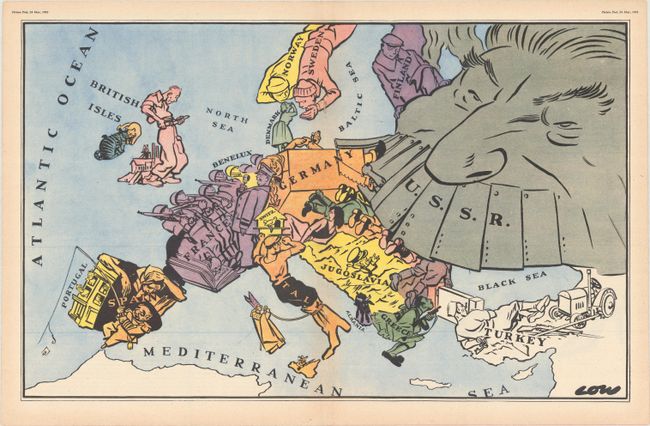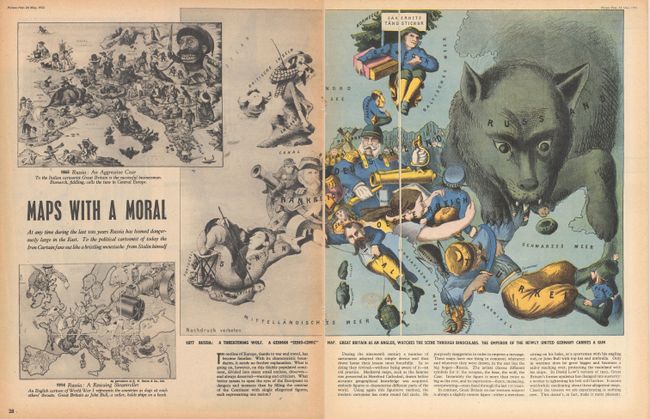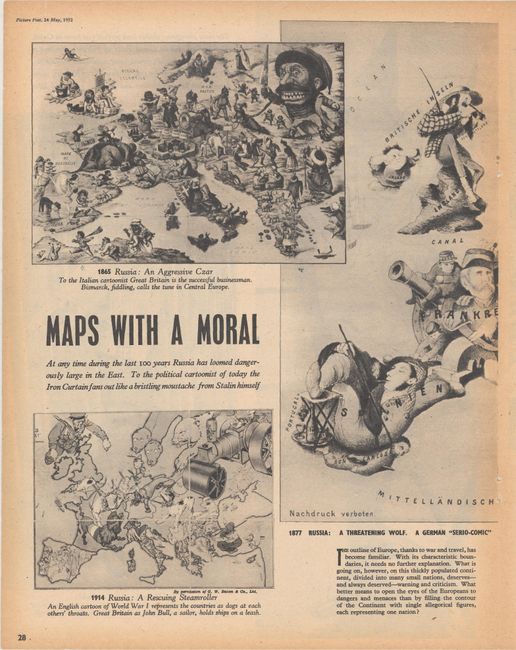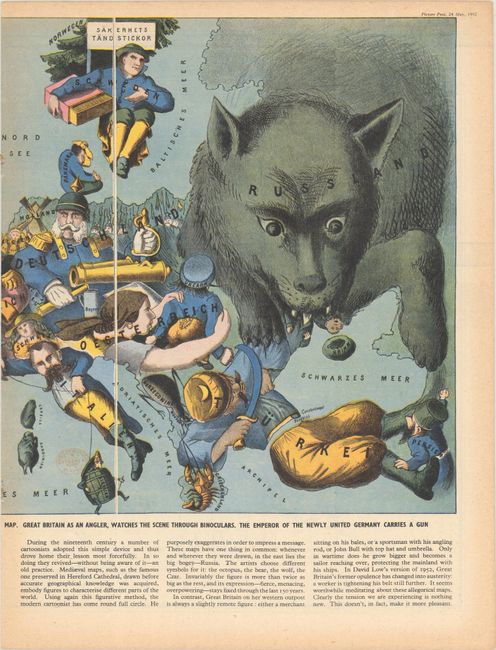Catalog Archive


Auction 184, Lot 449
"[Lot of 2 - Satirical Map of Europe with Article] "Maps with a Moral""
Subject: Europe, War
Period: 1952 (published)
Publication: Picture Post
Color: Printed Color
Size:
18.8 x 11.8 inches
47.8 x 30 cm
Download High Resolution Image
(or just click on image to launch the Zoom viewer)
(or just click on image to launch the Zoom viewer)



